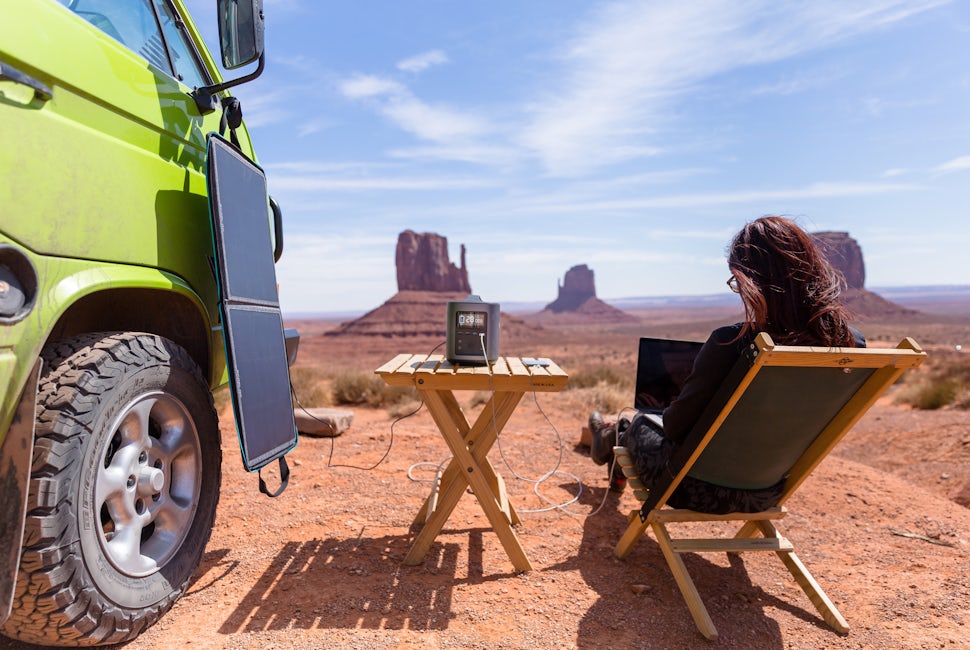Off-Grid: How to Camp with Solar Power
Once you set up a solar grid for camping, you'll never look back.

Keeping your devices charged (and charging) while camping used to be challenging, but with the incredible improvements in power storage and solar efficiency it has become very easy to set up your own portable power grid to take with you on the trail, in your car, or in/on your overlanding rig.
Every solar grid is comprised of two main components: solar panels and storage (batteries). Panels are rated by efficiency and how much power they can output. Batteries are rated by how much power they can store and how flexible they are with their inputs (how they are charged) and their outputs (how many things can be plugged into them while drawing power), and secondarily by how much they weigh, which is the primary limiting factor on their use and why lithium is so much better than lead-acid.
The minimalist and only real option for multi-day backpacking is a small 5, 10, or 20 watt panel attached to a backpack that provides just enough power to charge a small battery, giving your cell phone one or two additional charges (at most).
For all other scenarios and when you are looking to charge devices like a laptop, cameras, video cameras, and even micro-refrigerators, your options increase dramatically.
The smart option is to invest in a lightweight lithium battery that can be charged from a wall jack while you are at home, the cigarette lighter while you are driving, and from a solar panel at your campsite/basecamp. When paired with a portable 50w or 100w solar panel, your grid is complete.
A battery with a decently-high watt-hour storage value (think 400 watt-hour or more) is an excellent choice, meaning you can recharge your laptop a half dozen times and the phones of everyone in your camp a dozen times each before needing a recharge.
While there are many options to choose from an excellent grid setup (and the one I employ) is the RIVER from EcoFlowTech. It is so lightweight and portable that I will often take it with me into coffee shops instead of having to deal with trying to find an open wall jack, and the accompanying solar panel hangs easily from a tree or from my van.
We want to acknowledge and thank the past, present, and future generations of all Native Nations and Indigenous Peoples whose ancestral lands we travel, explore, and play on. Always practice Leave No Trace ethics on your adventures and follow local regulations. Please explore responsibly!
Do you love the outdoors?
Yep, us too. That's why we send you the best local adventures, stories, and expert advice, right to your inbox.











